
NGC 7003 is a spiral galaxy around 220 million light-years from Earth in the constellation Delphinus. NGC 7003 has an estimated diameter of 80,800 light-years. The galaxy was discovered by German astronomer Heinrich Louis d'Arrest on August 26, 1864. There also has been at least one supernova observed in NGC 7003.

NGC 523, also known as Arp 158, from the ARP catalog is a spiral galaxy located in the constellation Andromeda. It was discovered separately by William Herschel on 13 September 1784, and by Heinrich d'Arrest on 13 August 1862. d'Arrest's discovery was listed as NGC 523, while Herschel's was listed as NGC 537; the two are one and the same. John Dreyer noted in the New General Catalogue that NGC 523 is a double nebula.
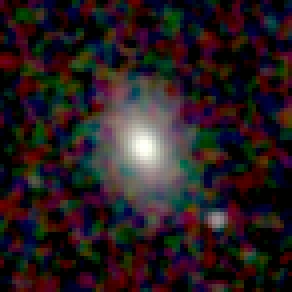
NGC 7033 is a lenticular galaxy located about 390 million light-years away in the constellation of Pegasus. It is part of a pair of galaxies that contains the nearby galaxy NGC 7034. NGC 7033 was discovered by astronomer Albert Marth on September 17, 1863.
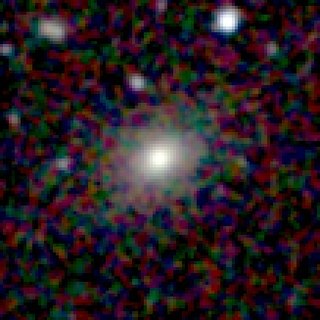
NGC 7034 is an elliptical galaxy located about 380 million light-years away in the constellation of Pegasus. It is part of a pair of galaxies that contains the nearby galaxy NGC 7033. NGC 7034 was discovered by astronomer Albert Marth on September 17, 1863.

NGC 7038 is an intermediate spiral galaxy located about 210 million light-years away in the constellation of Indus. Astronomer John Herschel discovered NGC 7038 on September 30, 1834.

NGC 7043 Is a barred spiral galaxy located about 200 million light-years away in the constellation of Pegasus. NGC 7043 is part of a pair of galaxies that contains the galaxy NGC 7042. It has an estimated diameter of 73,100 light-years. NGC 7043 was discovered by astronomer Albert Marth on August 18, 1863.

NGC 7047 is an intermediate spiral galaxy located about 270 million light-years away in the constellation of Aquarius. NGC 7047 is also classified as a LINER-type galaxy. NGC 7047 has an estimated diameter of 127,350 light years. It was discovered by French astronomer Édouard Stephan on August 20, 1873. In 2009 a supernova was found in NGC 7047.

NGC 7051 is a barred spiral galaxy located about 100 million light-years away in the constellation of Aquarius. It was discovered by astronomer John Herschel on July 30, 1827.
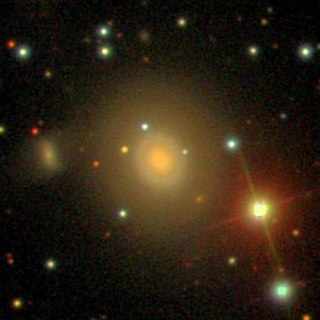
NGC 7053 is a spiral galaxy located about 200 million light-years away in the constellation of Pegasus. It was discovered by astronomer Albert Marth on September 2, 1863. It was then rediscovered by astronomer Heinrich d'Arrest on October 8, 1865.
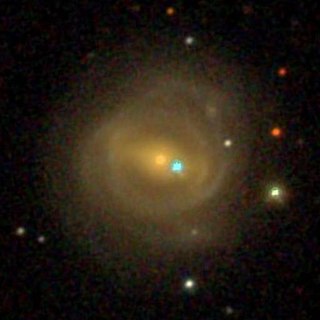
NGC 7065 Is a barred spiral galaxy located about 320 million light-years away in the constellation of Aquarius. NGC 7065 is part of a pair of galaxies that contains the galaxy NGC 7065A. NGC 7065 was discovered by astronomer Albert Marth on August 3, 1864.

NGC 7068 is a spiral galaxy located about 215 million light-years away in the constellation of Pegasus. NGC 7068 was discovered by astronomer Albert Marth on November 7, 1863.

NGC 7080 is a barred spiral galaxy located about 204.5 million light-years away in the constellation of Vulpecula. It has an estimated diameter of about 100,000 light-years which would make it similar in size to the Milky Way. NGC 7080 was discovered by astronomer Albert Marth on September 6, 1863.

NGC 7083 is an unbarred spiral galaxy located about 134 million light-years away in the constellation of Indus. It is also classified as a flocculent spiral galaxy. NGC 7083 was discovered by astronomer James Dunlop on August 28, 1826.

NGC 7085 is a spiral galaxy located about 365 million light-years away in the constellation of Pegasus. NGC 7085 was discovered by astronomer Albert Marth on August 3, 1864.

NGC 7816 is a spiral galaxy located about 215 million light-years away in the constellation of Pisces. It was discovered by astronomer William Herschel on September 26, 1785.

NGC 4340 is a double-barred lenticular galaxy located about 55 million light-years away in the constellation of Coma Berenices. NGC 4340 was discovered by astronomer William Herschel on March 21, 1784. NGC 4340 is a member of the Virgo Cluster. NGC 4340 is generally thought to be in a pair with the galaxy NGC 4350.
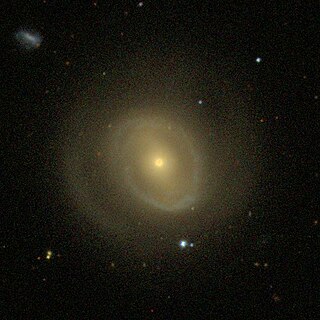
NGC 4454 is a barred spiral galaxy located about 123 million light-years away in the constellation of Virgo. NGC 4454 was discovered by astronomer William Herschel on April 17, 1784.

NGC 4753 is a lenticular galaxy located about 60 million light-years away in the constellation of Virgo. NGC 4753 was discovered by astronomer William Herschel on February 22, 1784. It is notable for having distinct dust lanes that surround its nucleus. It is a member of the NGC 4753 Group of galaxies, which is a member of the Virgo II Groups, a series of galaxies and galaxy clusters strung out from the southern edge of the Virgo Supercluster.
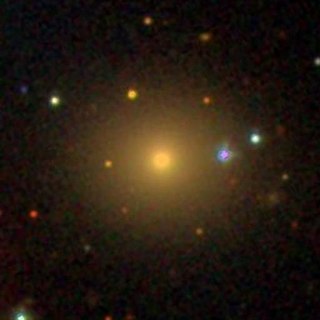
NGC 1259 is a lenticular galaxy located about 243 million light-years away in the constellation Perseus. The galaxy was discovered by astronomer Guillaume Bigourdan on October 21, 1884 and is a member of the Perseus Cluster.

NGC 1282 is an elliptical galaxy located about 230 million light-years away in the constellation Perseus. It was discovered by astronomer Guillaume Bigourdan on October 23, 1884. NGC 1282 is a member of the Perseus Cluster.




















